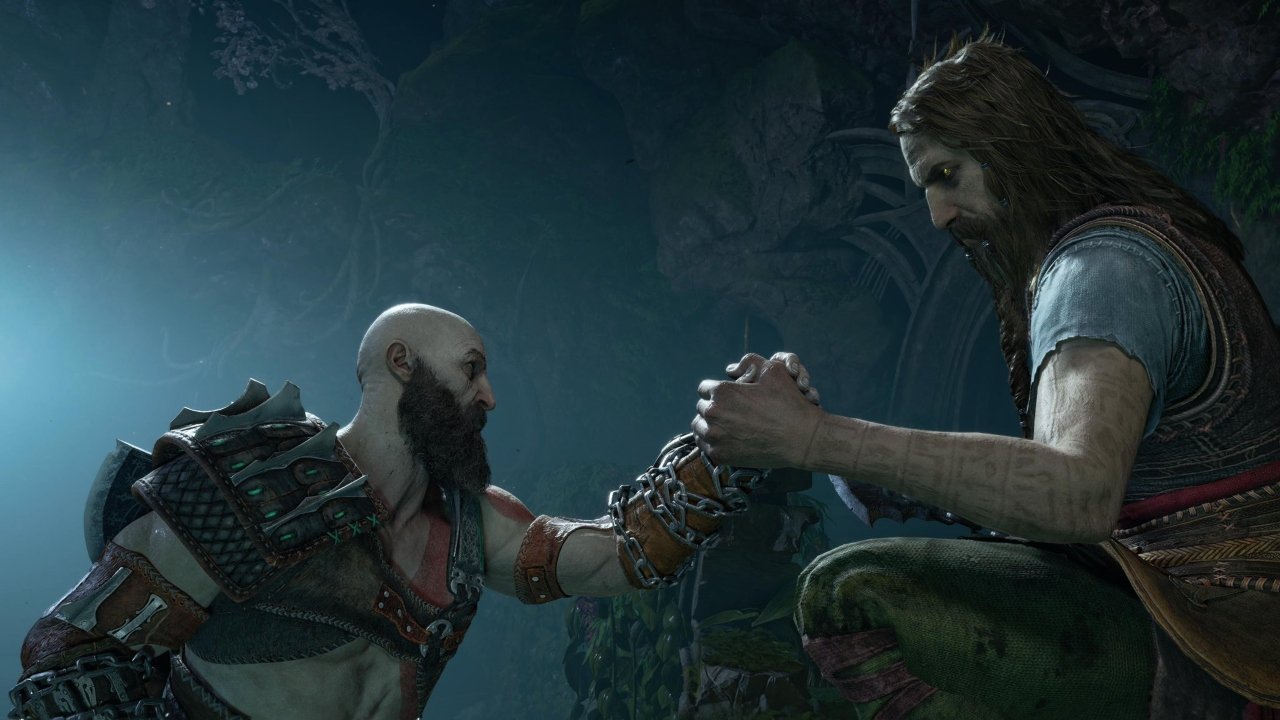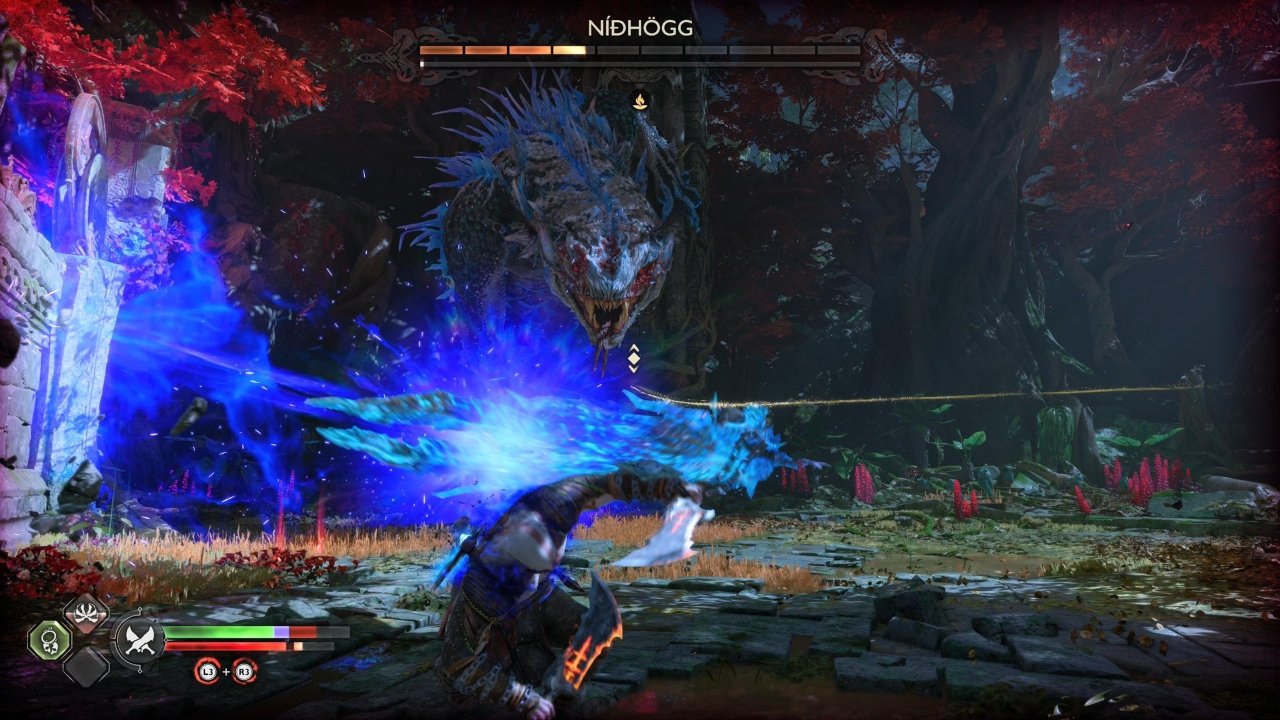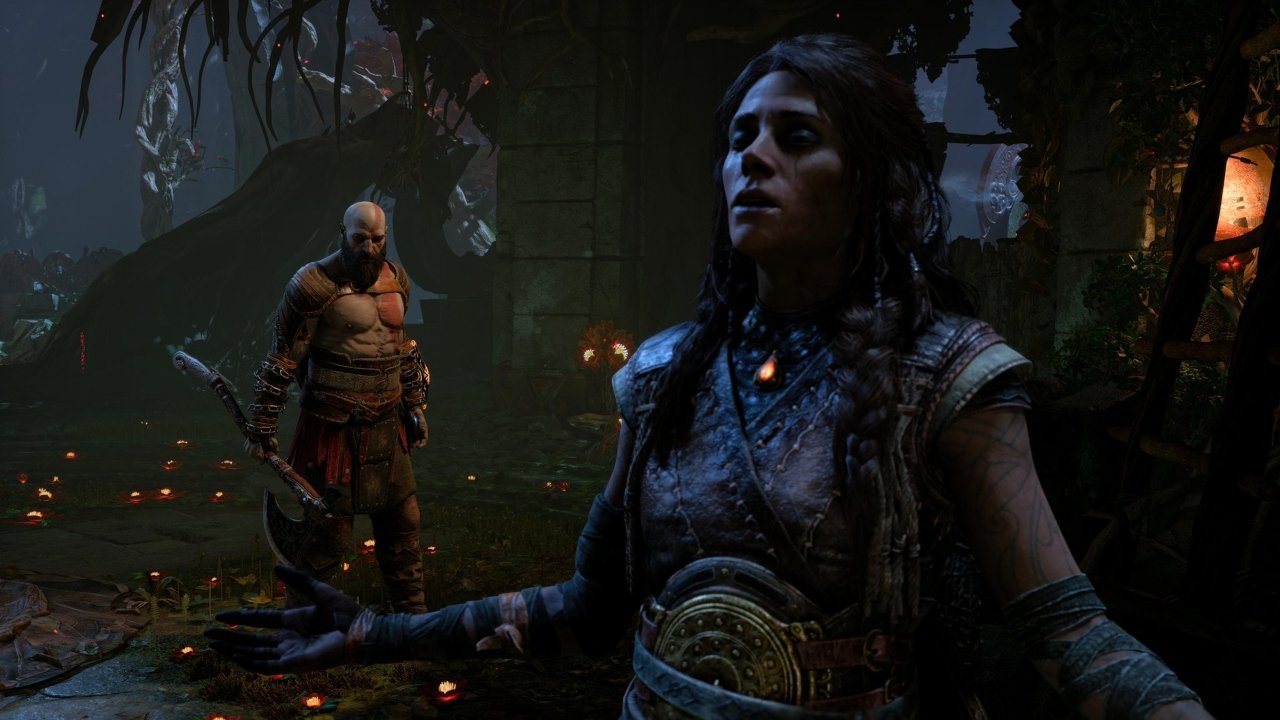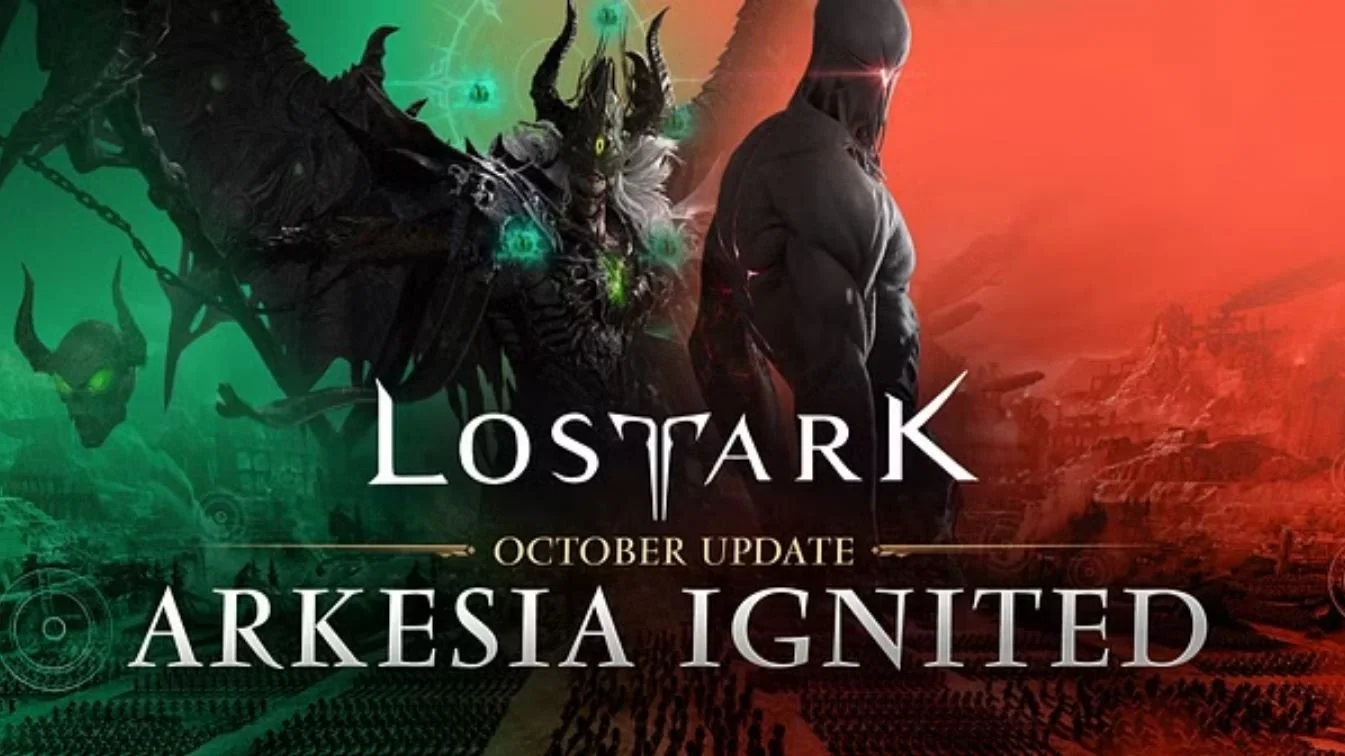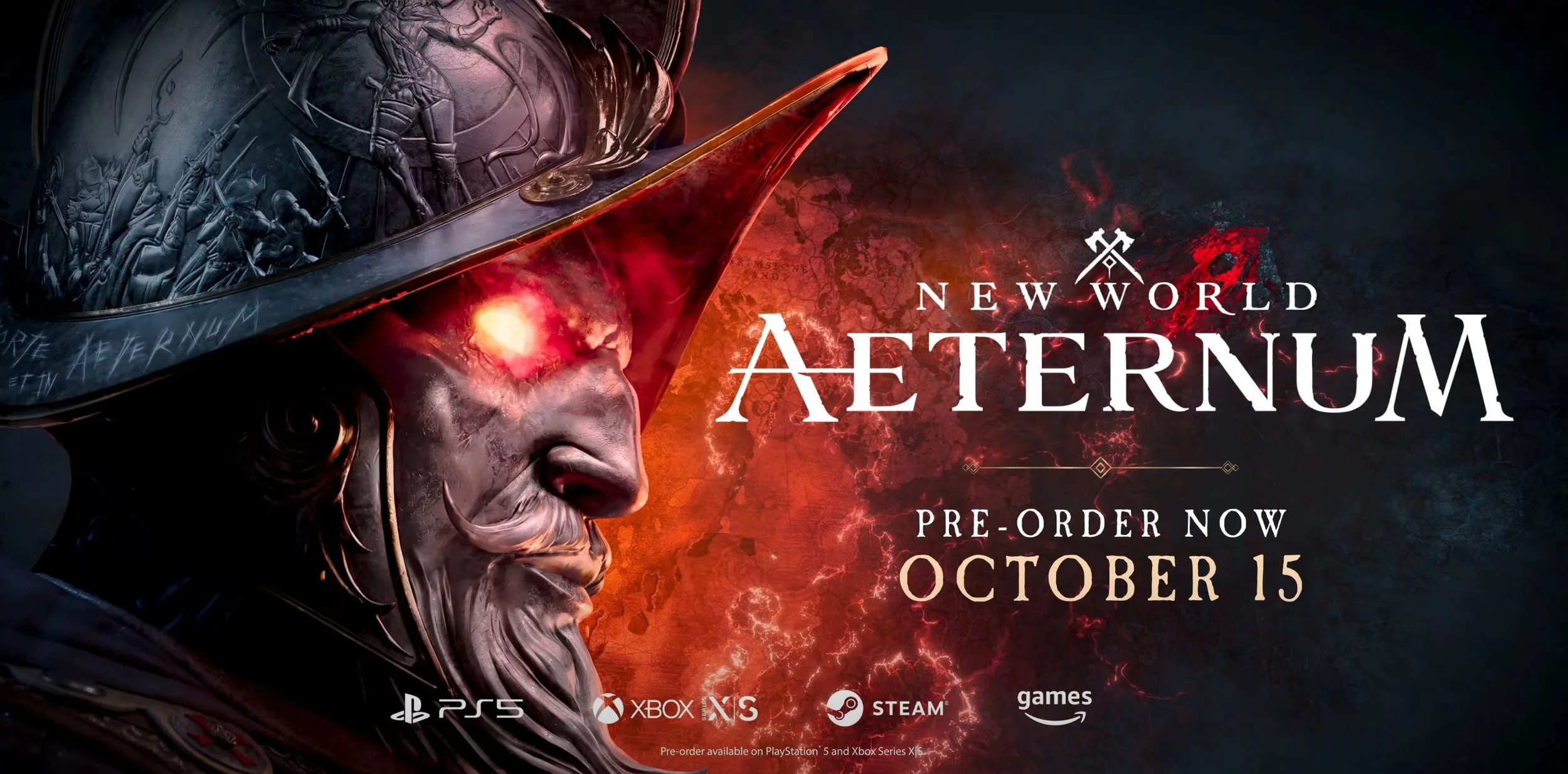PlayStation 5 code provided by Sony.
God of War (2018) is one of the greatest video games ever made, bar none. It’s not really something that’s up for debate but rather accepted as fact by the majority of the gaming community. It took one of the most reprehensible and misogynistic characters in video games and turned him into a sad, introspective father figure. That’s hardcore, and the game measured up.
Now, nearly five years later, Santa Monica Studio is attempting to follow up on their incredible vision with a sequel: God of War Ragnarök. Making any video game is a difficult task, but making the successor to one of the most decorated games in history? That’s practically Sisyphean. And yet, God of War Ragnarok proves that lightning can, in some instances, strikes twice.
Story
God of War Ragnarok (GoWR) begins a few years after the events of God of War (2018) in the midst of the ominous phenomenon known as Fimbulwinter. Midgard has frozen over, making the realm even more inhospitable, but Kratos and Atreus have eked out an existence while dodging the furious attacks of a grief-stricken Freya.
In this way, GoWR is very much a direct sequel to the first game. The story develops quickly, introducing new characters, events, and goals at a breakneck pace. The cast this time around is much larger, featuring several familiar faces and tons of new ones from across the Norse pantheon. Each character has its part to play, and GoWR does an admirable job of giving each of them some level of significance.
The overall story, however, does take a little while to truly get going. While the true goal of the 2018 game was clear from the very start, Ragnarok doesn’t always seem to know its path. Many of its major story beats in the game’s first half feel like asides that only serve to put our protagonists in place for the next plot point. That’s not to say any of these moments are unenjoyable, but the story meanders at times in ways that muddy the overall plot.
But even with a less clear focus, the presentation of the story is utterly phenomenal. The dialogue is razor sharp, flitting between witty aphorisms about the state of the world and intense, emotional diatribes about familial love and destiny. I defy anyone to not cry at least once throughout the course of this game.
The performances and writing for Kratos and Freya deserve particular attention, as both Chris Judge and Daniel Bisutti put every ounce of intent and emotion into these characters. Their conversations, especially while in Vanaheim, are some of the most poignant I’ve experienced in any form of media. Kratos has come a long way since his Ghost of Sparta days, and the writers at Santa Monica Studio have given him a powerful voice with which to express his evolution.
Gameplay
God of War (2018) introduced a new style of combat for the franchise that transformed the series into a tighter, more strategic experience. Ragnarok doesn’t radically alter the formula in the same way but instead builds on the new style’s foundations in some exciting ways. The Leviathan Axe returns, as do the Blades of Chaos, and you’ll go through very similar upgrade paths to boost their stats and unlock new skills.
There are a few new additions, however, that add extra incentive while also opening up more customization in how you can approach combat. For instance, you can unlock special enhancements for many of Kratos’ skills simply by using them a certain number of times. There’s also a new, unique piece of equipment that is highly customizable to suit a wide variety of playstyles.
Armor has also been improved, as every set can be upgraded to the max rank. If you want to spec entirely into Strength, that option is available. Armor sets also synergize, granting special perks when meeting certain requirements in battle. My favorite was a set that gave me a strength boost every time I used a Runic or Talisman ability while also reducing all of my cooldown timers.
This heightened level of customization makes combat feel more directed. While a single strategy might not work as well against every enemy type, I could make my favorite attacks and abilities work in just about any situation. And with a clear goal in mind, I felt like I was directing the flow of combat more than I was reacting to it.
In addition to the combat, Ragnarok is stuffed with puzzles, collectibles, and side quests that easily add an extra 10 to 15 hours to what is already a 20+ game. There’s a staggering amount of content to be had here, and after nearly 25 hours I still feel like I’m missing out on a lot of it. There’s a recurring fight with a particularly nasty Draugr, poems that reference some familiar titles, and optional bosses that would make even the Valkyries weep.
I will say that while I’m happy a lot of this extra stuff is here, it does make Ragnarok feel a little too gamey at times. The meta references, dialogue that reminds you to take a break and go explore for a bit, and even just the way Kratos navigates the world all feel more like a typical video game than even the 2018 release. It’s a mild issue, but Ragnarok does dip its toe into the pool of video game fatigue in a way its predecessor never did.
Audio and Visual
God of War Ragnarok is a stunning video game that looks like a truly incredible, late-stage PlayStation 4 title. This isn’t an insult by any means, but it just isn’t the visual juggernaut fans have been expecting from the current generation of consoles. The game is breathtaking, with sweeping vistas and beautiful environments. The character models in particular are astounding, and many of these characters look significantly better than they did just four years ago.
The animation team at Santa Monica Studio deserves some serious accolades for the work they’ve done here, most notably when it comes to Kratos himself. The way this man emotes is astonishing, especially in some of the later cutscenes. I’ve never seen video game characters move like this, and it’s one feature that does make this game feel truly current-gen.
Bear McCreary returns as the composer for God of War Ragnarok, and he proves once again that he’s one of the finest composers alive today. The music is perfect, striking an impeccable balance between intense and lighthearted. There’s a bit more levity and brightness throughout Ragnarok than there was in 2018, and McCreary’s arrangements meet these moments with breezy trills that promise adventure and excitement. Similarly, moments of tension are filled with heavy bass and somber chords that aptly suit Kratos’ withering expressions.
What Could Be Better
Not much, to be honest. My only real critique is that the story doesn’t seem to have a clear direction for much of its first half. There’s an amorphous goal on the horizon, but each step toward that goal feels indirect at best and unexplained at worst. The moments are enjoyable and the presentation exhilarating, but the actual purpose is murky. There’s a point in the game where this changes and things become a lot clearer and more interesting, but I wish that turn had happened a little sooner.
Verdict
God of War Ragnarok is an incredible follow-up to one of the greatest video games ever made. It somehow manages to capture the magic that made the first game so special while also adding its own unique flavor to the mix. While it doesn’t quite have the same level of intimacy as its predecessor, its story is a jaw-dropping rollercoaster of exhilaration and mayhem. God of War Ragnarok is Sony Santa Monica’s magnum opus, and it will undoubtedly sit alongside the 2018 release as one of the most impressive achievements in gaming history.
God of War Ragnarok is available now for the PlayStation 4 and PlayStation 5.
